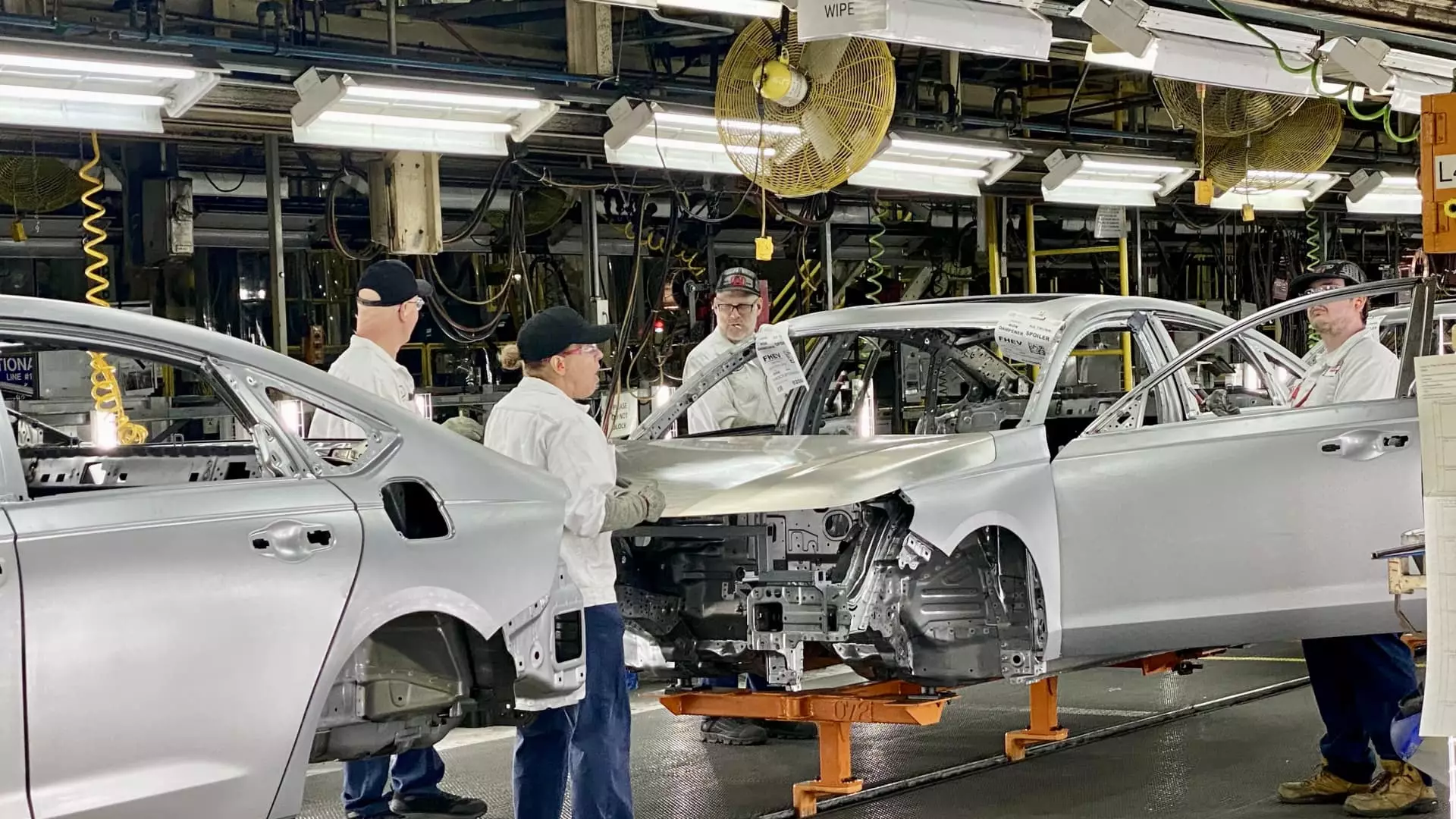In a strategic pivot that reflects the growing significance of electric vehicles (EVs) in the automotive industry, Honda Motor Co. is making a remarkable move by channeling over $1 billion into its manufacturing operations in Ohio. This substantial investment, which surpassed earlier projections of $700 million, positions Ohio as a pivotal player in Honda’s future, especially in the realm of EV production. At the core of these upgrades are the installation of six monumental “giga presses,” akin to those popularized by Tesla, aimed at revolutionizing the way EV components are manufactured.
Honda’s ambitious plans for an EV hub in Ohio do not merely signify a shift in production practices but outline the company’s aspirations to create a global standard for electric vehicle manufacturing. The newly transformed landscape includes an impressive battery plant, with an investment tallying $3.5 billion, further underscoring the significance of this location in Honda’s long-term vision.
Honda’s decision to enhance its manufacturing capabilities in Ohio marks a departure from the traditional pathways of technology transfer from Japan to its global operations. Instead, this new approach reflects a favorable response to the ongoing dialogues surrounding on-shoring manufacturing in the U.S. This shift is not only about cost-effectiveness but also about adapting to evolving consumer demands in a world increasingly leaning towards sustainability.
Honda’s Marysville Auto Plant, the axis around which these upgrades revolve, is set to become a haven for a diverse range of vehicles, including traditional models, hybrids, and, importantly, fully electric vehicles on the same assembly line. This multi-faceted manufacturing model is a hallmark of flexibility, enabling Honda to respond efficiently to market dynamics. Mike Fischer, the North American lead for Honda’s battery-electric vehicle projects, articulated the company’s vision, declaring that this facility would establish benchmarks for future EV production both regionally and globally.
Despite a late entry into the EV market compared to some competitors, Honda remains resolute in its ambition to carve out a substantial niche. Currently, the company offers two all-electric crossovers in the U.S. but recognizes the necessity for in-house capabilities. The introduction of the all-electric Acura RSX promises to catalyze a significant change in production orientation, with batteries sourced and assembled in proximity to manufacturing plants.
The heart of this innovation lies in the state-of-the-art technologies being deployed in Ohio. With the introduction of colossal 6,000-ton gigacasting machines, Honda is poised to slash manufacturing costs and timeframes. By transitioning from traditional multi-part assembly methods to single-module casting, the company will enhance efficiency and scalability—transformative steps at a time when operational costs are under scrutiny.
Honda’s foray into EV production in Ohio is not merely an economic venture; it is also a commitment to environmental stewardship. The company’s ambitious goal of achieving carbon neutrality by 2050 and its plan to exclusively sell zero-emission vehicles by 2040 highlight the alignment between technological innovation and sustainable practices. As environmental regulations tighten and consumer preferences shift towards greener alternatives, Honda’s investments in sustainable processes are a direct response to these trends.
Investment in recyclable materials, such as specialized structural aluminum for battery packs, emphasizes this commitment to sustainability. By prioritizing resource circulation and lowering waste, Honda is reimagining manufacturing while simultaneously enhancing its responsiveness to environmental imperatives. This dual focus not only serves to uphold Honda’s corporate responsibility but also positions it favorably in an increasingly eco-conscious marketplace.
Forcefully branded as “the second founding” of Honda by its executives, this ambitious transition toward EV production signifies a transformative chapter in the company’s storied history. With plans for robust production capabilities outlined, including a potential annual output of 220,000 vehicles at the Marysville plant, Honda aims to redefine its relationship with both the North American market and the global automotive arena.
Honda’s considerable investment and innovative manufacturing processes in Ohio may well serve as a blueprint for other automakers in the region. By prioritizing flexibility, sustainability, and cutting-edge technology, Honda is not just adapting to change; it is shaping the future of vehicle manufacturing. As the automotive landscape undergoes dramatic shifts toward electrification, Honda’s commitment to innovation could very well secure its legacy in this new age of mobility, making it not only a manufacturer of vehicles but also a pioneer of sustainable practices in the automotive industry.

